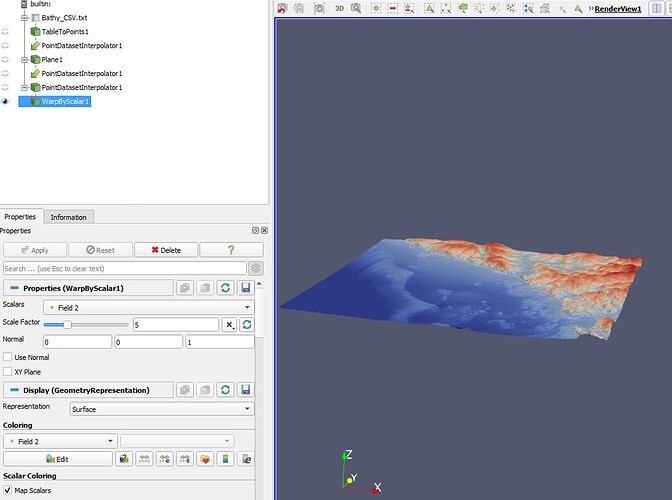Hej Iban,
I just saw this post: mapping scalar data to unstructured mesh which could be used if you want to visualize the .txt files as surfaces (well, as long as nobody has a smarter answer to this…):
With TableToPoints applied to the input data and a plane source positioned at the same grid location, you can use the PointDatasetInterpolator to map the point data to the plane. After that you can use the WarpByScalar filter to produce the elevation from Field 2.
(I used a vertical exaggeration of 5 in the plot.)
Cheers,
Venke
